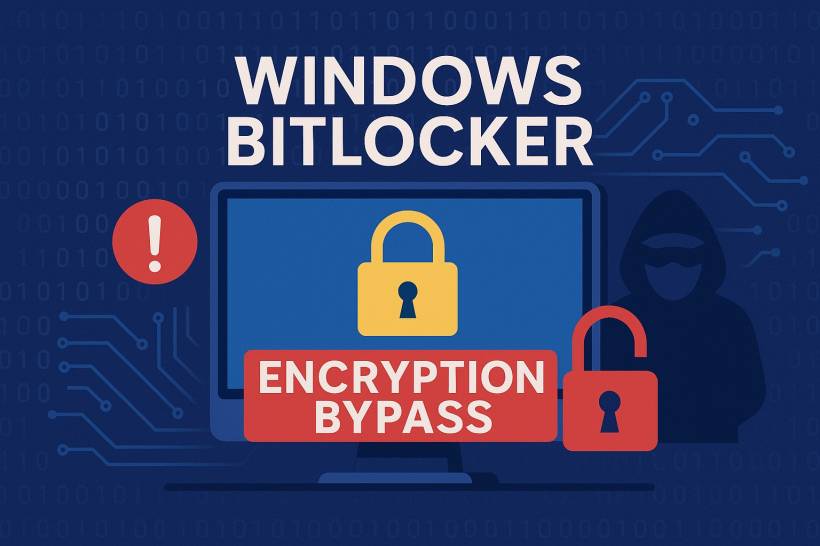A Big Shock for Windows Security - For years, Microsoft's BitLocker encryption has been seen as one of the strongest built-in protections against data theft. Whether on a corporate laptop or a personal device, BitLocker promised that even if someone stole your computer, your files would remain locked away behind layers of encryption.
But researchers have now revealed something alarming—four zero-day vulnerabilities that can completely bypass BitLocker in just minutes if an attacker has physical access to the device.
Breaking Down the Vulnerabilities
The flaws aren't in BitLocker's encryption algorithm itself, but rather in the Windows Recovery Environment (WinRE)—the special mode Windows uses for repairs and troubleshooting. By exploiting weaknesses there, attackers can sidestep the encryption altogether.
Here's a look at each of the four vulnerabilities:
1. Boot.sdi Parsing Flaw (CVE-2025-48800)
Attackers manipulate the Boot.sdi file, tricking the system into accepting malicious recovery images. This bypasses trusted validation and allows unapproved code to run while making everything look normal.
2. ReAgent.xml Exploitation (CVE-2025-48003)
By abusing the offline scanning feature, researchers showed they could use a legitimate debugging tool (TTTracer.exe) to open command prompts with full access to encrypted drives.
3. Trusted App Manipulation (CVE-2025-48804)
This exploit takes advantage of SetupPlatform.exe, a trusted app that hangs around even after Windows upgrades. With the right tweaks, attackers can set up permanent shortcuts to launch privileged command prompts.
4. BCD Configuration Attack (CVE-2025-48818)
The most advanced attack targets the Boot Configuration Data (BCD). By tampering with reset operations, attackers can trick the system into decrypting BitLocker volumes during recovery.
Why These Attacks Are Different
What makes these vulnerabilities especially dangerous is how they exploit BitLocker's "Auto-Unlock" state. Normally, if someone tampers with a locked volume, BitLocker re-engages and prevents access. But with these WinRE-based attacks, the system never re-locks, meaning attackers keep full access during the entire process.
Who's at Risk?
The vulnerabilities affect a wide range of Microsoft products, including:
n short, just about any modern Windows device using BitLocker could be a target. Millions of systems worldwide fall into this category, from personal laptops to enterprise servers.
Microsoft's Fixes and Mitigations
The good news is that Microsoft moved quickly. In July 2025, the company rolled out patches addressing all four flaws. But installing updates alone isn't enough—Microsoft also recommends organizations take extra steps to strengthen their defenses:
Final Thoughts
This discovery is a sobering reminder that even the strongest encryption can be undermined if the supporting environment is flawed. For attackers, these BitLocker bypasses open a door to data that was once thought secure. For businesses and individuals, the lesson is clear: don't delay security updates and always enable extra safeguards like TPM with PIN.
BitLocker still remains a strong security feature—but only if combined with proper configurations and the latest patches.




